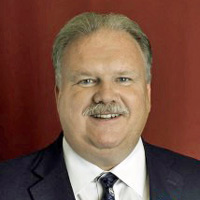OH businesses struggle with rising cost of unemployment

By Maggie Thurber | For Ohio Watchdog
HURTING: The state’s $1.55 billion debt to cover unemployment compensation spending is making Ohio companies less competitive, Ed Nagle, president of a family-owned trucking firm, says.
Ed Nagle was beside himself. One of his workers was often late and absent, and the pattern continued despite Nagle’s best efforts to fix it.
“It was negatively impacting our operations and our other employees,” said Nagle, president and CEO of Nagle Companies, a family owned transportation company in Lake Township, Ohio.
“She couldn’t come to work because she was taking her kids to Cedar Point, or she just didn’t feel good. In the end, we had to let her go.”
The worker filed for unemployment. Nagle, believing the separation was for “just cause” under Ohio law, fought it.
The state believed otherwise. It wasn’t her fault she was often sick and failed to come to work, they said. Ohio approved her claim.
Nagle said he wonders whether such decisions are part of the reason Ohio’s Unemployment Insurance Trust Fund is in trouble, why employer rates keep rising.
Ohio’s Trust Fund ran out of money midway through the recent recession. In 2010, the fund was collecting an average $97 million per month but paying an average $140 million per month.
In 2009, Ohio began borrowing from the federal government to cover the deficit, said Benjamin Johnson, deputy director of the Ohio Department of Job and Family Services.
The state borrowed $2.6 billion. It repaid back some of the principle but still owes $1.55 billion.
Because of that debt, Ohio businesses have paid more in unemployment compensation taxes during the past three years — an additional $63 per employee in January that will increase to $84 in 2015 unless the state repays its loans in full.
So, what’s the plan for paying off the debt and eliminating the employer penalty?
There isn’t one.
In fact, the statutory body charged with making recommendations about the Trust Fund hasn’t met in nearly four years. Even if the Unemployment Compensation Advisory Council does meet it couldn’t conduct business. Only two of 12 positions are filled.
In January, the job and family services website listed two members — Sen. Kevin Bacon, R-Columbus, and Rep. Nick Barborak, D-Lisbon. But as of Monday, that page is no longer on the site – and neither is the webpage that listed information about the council.
As a freshman legislator, Barborak said he was asked to serve on the council because of his background in employment law.
“I thought we’d get moving on it after the summer recess, and I didn’t realize I was the only appointment until I started looking into it and realized no one else was a member,” he said. “We reached out to Senator Bacon but haven’t heard back.”
Bacon’s office did not respond to requests from Ohio Watchdog.
According to the Ohio Revised Code, the governor is supposed to appoint six representatives — three employers and three employees.
“We are not going to appoint people to the council only to have them bicker and argue and not accomplish anything, which has been its history,” Rob Nichols, press secretary for Gov. John Kasich, said in an email.
But wouldn’t that be solely up to the governor to appoint people who won’t “bicker and argue”?
Nichols failed to elaborate.
The House and Senate are supposed to appoint two members, along with chairmen of the committees that deal with unemployment.
Despite the law, Barborak can’t explain the lack of interest in filling the appointments.
“Maybe it’s by design,” he said. “I don’t know and don’t want to speculate, but I don’t think it would hurt to fulfill our mission.”
That mission includes the solvency of the Trust Fund, meeting minutes show.
In June 2009, the UCAC got an update: Without changes, the Trust Fund balance would continue in the red, and benefits would be greater than taxes collected.
“The house is on fire,” member Tom Weeks said then. “Do we wait for it to burn down? Why are we here? What are we (UCAC) going to do about this situation?”
Three months later the minutes note:
“To date $1.3 billion borrowed, interest waived until 2011. UCAC will need to address the Trust Fund’s solvency issues. … Based on current projections, Ohio is in a permanent borrowing status until the current statutory structure is changed.”
At the next meeting in May 2010, the council was told a solvency goal for the fund “should be $500 million in excess of the average annual payout.”
The council hasn’t met since, yet Ohio has paid more than $181 million in interest on the loan. Another $38 million interest payment is due in September.
But for each year the state still owes the federal government, the amount employers have to pay increases.
Under the Federal Employment Tax Act, employers pay the federal government 6 percent of the first $7,000 in wages for each affected worker. A credit of 5.4 percent is available if certain conditions are met.
But if the state has an outstanding loan, that credit is reduced each year in .3 percent increments. This year in January, Ohio employers saw a .9 percent reduction and paid more than double the regular tax amount.
“We all have the same competitive disadvantage within Ohio,” Nagle said, “but we don’t want to be at a competitive disadvantage with Indiana or any of the other states.
“The state’s in much better financial situation today than it was before Kasich took office, and this is something that he inherited along with the state deficit. But it needs to be taken care of so it’s not a continuing increase in rates that businesses have to pay. He’s the governor and, advisory council or not, it’s his responsibility to have a plan to pay it back.”







